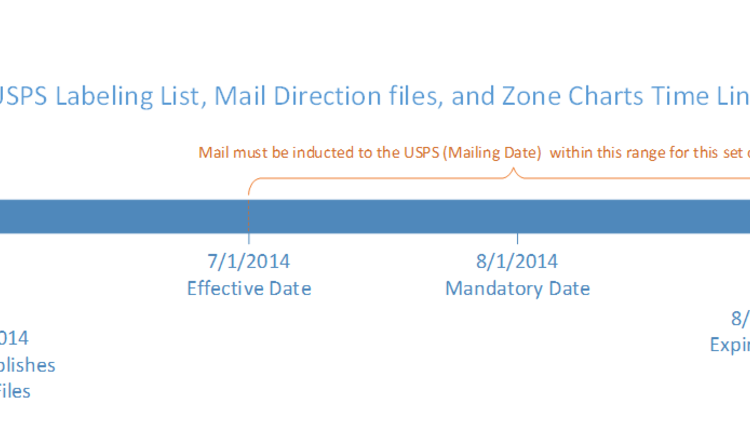From address cleansing to presorting, to producing the Intelligent Mail Barcode on the mailpiece, postal software is a crucial component of any mailing operation. This dependency on USPS-certified software and its underlying data is now more critical than ever for mailers who wish to achieve the essential postage discounts derived from workshare opportunities. In this issue, I will start to break down the basic components of postal software and explain how these tools, when used collectively and in the right order, will indeed yield significant postage discounts and ensure timely and predictable mail delivery.
If you're new to the mailing industry, or even if you're a veteran, you are probably aware that acronyms abound when we start talking about the tools and technology leveraged to prepare bulk mailings. Terms like CASS, MASS, PAVE and MAC are related to some type of USPS certification. Then on top of that, you have services that leverage data from sources such as NCOALINK, DPV, LACSLINK, DSF2 and many more. It looks like some type of secret code, and it can be somewhat ominous to those unfamiliar with the software side of the mailing industry.
Postal software is typically broken down into three major areas: address cleansing, presorting and label generation. Each of these areas has very specific rules, USPS certification and essential data that aid in their operations. Let's start by looking at the address cleansing component.
Ensuring Delivery
A name and address that is complete, correct and current is the most effective way to ensure ultimate delivery of a mailpiece. In order to achieve that, mailers must use CASS-certified software. CASS (also known as the Coding Accuracy Support System) is an annual USPS certification program by which a software vendor processes a list of 150,000 USPS-provided addresses through their product and returns the results to the USPS for grading. An average score of 98.5% accuracy across several categories of address correction will result in achieving CASS certification for that year's cycle of changes.
Traditionally, CASS-certified software only entailed appending a ZIP+4 Code to a five-digit ZIP Code if the primary address (i.e. the house number) fell within a specific range of deliverable addresses. Today, CASS-certified software can only provide the ZIP+4 if the primary address can be definitively confirmed as deliverable using Delivery Point Validation (DPV) data.
DPV was added to CASS-certified software on August 1, 2007 due to the enormous costs attributed to undeliverable as addressed (UAA) mail. According to an independent cost analysis, UAA costs the USPS nearly $2 billion each year and results in roughly 10 billion pieces of mail being forwarded, returned or disposed (recycled). Sadly, nearly eight of these 10 billion pieces never reach their intended recipient.
The latest addressing requirement change went into effect on November 23, 2008. In order for First-Class or Standard mail to receive any postage discount, an approved Move Update method must be applied to the names and addresses at least 95 days prior to the mailing. NCOALINK is one of those approved Move Update methods, and in next month's article, I'll explain how the underlying CASS-certified and DPV components directly impact the success of NCOALINK matching.
Christopher Lien is an Executive Vice President for BCC Software, a BÖWE BELL + HOWELL Company. He has been active in the mailing industry for over 15 years. He has been heavily involved in industry associations such as the Association for Postal Commerce, the Mailing & Fulfillment Service Association, Alliance of Nonprofit Mailers and the IDEAlliance. He is a frequent author of industry articles related to address quality, has hosted many online webinars and has spoken at numerous conferences and events.
If you're new to the mailing industry, or even if you're a veteran, you are probably aware that acronyms abound when we start talking about the tools and technology leveraged to prepare bulk mailings. Terms like CASS, MASS, PAVE and MAC are related to some type of USPS certification. Then on top of that, you have services that leverage data from sources such as NCOALINK, DPV, LACSLINK, DSF2 and many more. It looks like some type of secret code, and it can be somewhat ominous to those unfamiliar with the software side of the mailing industry.
Postal software is typically broken down into three major areas: address cleansing, presorting and label generation. Each of these areas has very specific rules, USPS certification and essential data that aid in their operations. Let's start by looking at the address cleansing component.
Ensuring Delivery
A name and address that is complete, correct and current is the most effective way to ensure ultimate delivery of a mailpiece. In order to achieve that, mailers must use CASS-certified software. CASS (also known as the Coding Accuracy Support System) is an annual USPS certification program by which a software vendor processes a list of 150,000 USPS-provided addresses through their product and returns the results to the USPS for grading. An average score of 98.5% accuracy across several categories of address correction will result in achieving CASS certification for that year's cycle of changes.
Traditionally, CASS-certified software only entailed appending a ZIP+4 Code to a five-digit ZIP Code if the primary address (i.e. the house number) fell within a specific range of deliverable addresses. Today, CASS-certified software can only provide the ZIP+4 if the primary address can be definitively confirmed as deliverable using Delivery Point Validation (DPV) data.
DPV was added to CASS-certified software on August 1, 2007 due to the enormous costs attributed to undeliverable as addressed (UAA) mail. According to an independent cost analysis, UAA costs the USPS nearly $2 billion each year and results in roughly 10 billion pieces of mail being forwarded, returned or disposed (recycled). Sadly, nearly eight of these 10 billion pieces never reach their intended recipient.
The latest addressing requirement change went into effect on November 23, 2008. In order for First-Class or Standard mail to receive any postage discount, an approved Move Update method must be applied to the names and addresses at least 95 days prior to the mailing. NCOALINK is one of those approved Move Update methods, and in next month's article, I'll explain how the underlying CASS-certified and DPV components directly impact the success of NCOALINK matching.
Christopher Lien is an Executive Vice President for BCC Software, a BÖWE BELL + HOWELL Company. He has been active in the mailing industry for over 15 years. He has been heavily involved in industry associations such as the Association for Postal Commerce, the Mailing & Fulfillment Service Association, Alliance of Nonprofit Mailers and the IDEAlliance. He is a frequent author of industry articles related to address quality, has hosted many online webinars and has spoken at numerous conferences and events.


